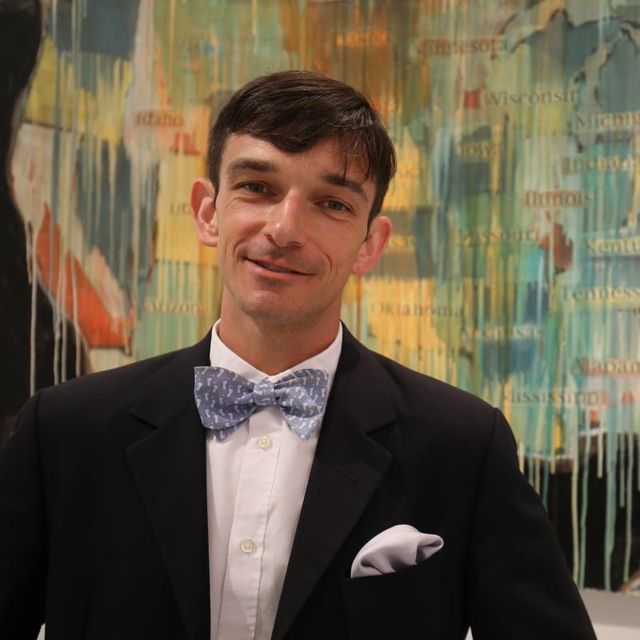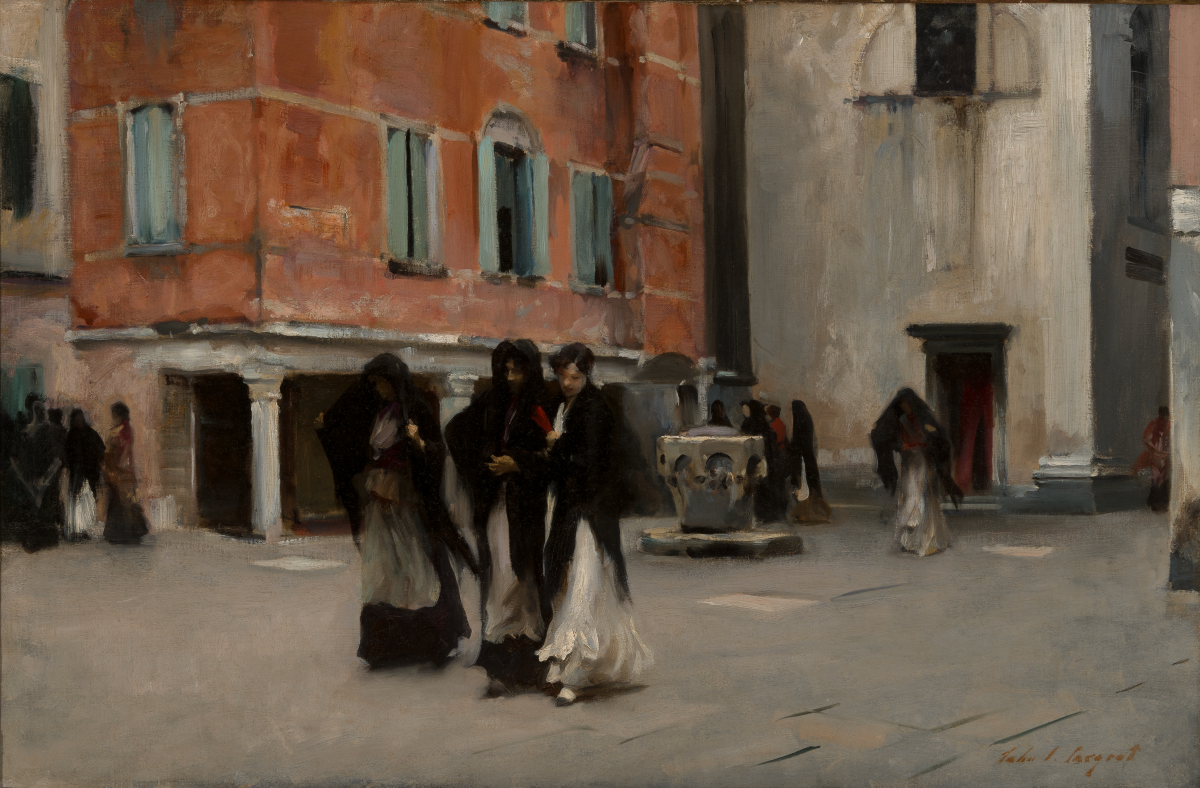

Anne Showalter: Can you tell us about SAAM’s new exhibition Sargent, Whistler and Venetian Glass: American Artists and the Magic of Murano?
Alex Mann: Sargent, Whistler, and Venetian Glass is an exhibition about the beauty, the magic, the appeal, the creativity, the history, and the energy of the city of Venice and why it was a destination for so many tourists, especially Americans, in the late nineteenth century. This exhibition is an opportunity for us to think about what they saw and did in Venice, what American artists were making while they were there and what visitors were collecting. What were they bringing home? How were they using works of art, objects, American art and things made in Venice, especially glass, as ways to understand, to remember, and to share the experience of Venice with their friends, to communicate to people in the United States what made Venice special? Why was this an art capital and what did they find special about it?
There are an impressive 140-plus objects in the exhibition. What will visitors see?
We have paintings, prints, watercolors, pastels, two-dimensional art of almost every medium imaginable, and decorative arts. The beauty of this show, is that we’re breaking the rules by juxtaposing fine art with decorative arts, principally works of glass, in many different forms that you might not necessarily expect. We have blown glass objects, mosaics made of glass tiles, and glass beads. Other craft products from Venice in this time period include jewelry and lace.
How do painters John Singer Sargent and James McNeill Whistler help tell the story?
We selected Sargent and Whistler as the two key artists to build our story around because both in many ways changed the way the city was depicted and understood. But they are really just two of dozens of American artists who worked in Venice in this time period. Whistler was only there for about fourteen months in 1879 to 1880, but that was one of the most productive periods of his career. He was painting, he was making pastels. He was doing etchings. His trip to Venice was a turning point in his career.
John Singer Sargent, on the other hand, visited Venice many times throughout the course of his life. He was actually born in Italy, because his parents were traveling and spent most of their lives as expatriates moving around Europe. Sargent had a very cosmopolitan education, was fluent in Italian, made friends easily and loved returning to Venice throughout the course of his career looking at interior spaces, looking at alleys, looking across the canals. He often painted in a gondola to study the facades of churches. He loved to work at noon and see the sun at its brightest as it was gleaming on the marble facades of churches and palaces along the Grand Canal.
Take us on a deep dive into one object in the exhibition.
One of my favorite objects in this exhibition comes from right here in Washington, DC. We have borrowed a Venetian glass mosaic portrait of President Abraham Lincoln that was made in 1866, that normally hangs in the hallway of the Senate wing of the U.S. Capitol building. This was made in Venice by Venetian glass makers shortly after President Lincoln's assassination as a sign of respect. It was given to the government of the United States to show that Lincoln was esteemed around the world, but also in order to demonstrate to the American government that Venetian glass and mosaics are beautiful things for decorating the halls of power. And hopefully, to inspire commissions. There is always the celebration of Venetian art and beauty, but also an ambition to share one's skills and cultural products in hopes of gaining business and esteem. We are very grateful to the Senate for lending this to us, and giving everyone a chance to see this wonderful, unusual work of art.
Women artists and collectors have a strong presence in the exhibition. Can you tell us more?
This is a time period in which travel to Venice was becoming easier for everyone, but also in which women were getting abroad more. You have opportunities for women who were artists in this time period to work overseas not just in Paris or Rome, but also in Venice. In the exhibition can see their contributions to this overall scene.
In addition, women are present within our story as collectors and as art patrons. You can think of people like Isabella Stewart Gardner and the fabulous museum that she has in Boston, constructed in the model and using parts of an actual Venetian palazzo. Jane Stanford, one of the founders of Stanford University, visited Venice, loved its art, its architecture, and its glass-making culture. She then hired Venetian glass makers to help decorate parts of Stanford University while supervising the building of its campus. We have elements of that project and of the Stanford collection within this exhibition. These enable visitors to see how across the United States there are elements of Venetian culture under our noses everywhere in the form of souvenirs, mosaics, and architecture.
Crawford Alexander Mann III is the museum’s curator of prints and drawings. Anne Showalter is a digital interpretation specialist at SAAM. See more artworks from the exhibition Sargent, Whistler, and Venetian Glass: American Artists and the Magic of Murano in our online gallery, and and hear more from Alex Mann in our introductory video below.
























